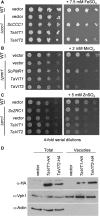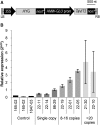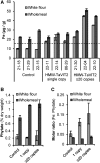Wheat Vacuolar Iron Transporter TaVIT2 Transports Fe and Mn and Is Effective for Biofortification
- PMID: 28684433
- PMCID: PMC5543970
- DOI: 10.1104/pp.17.00672
Wheat Vacuolar Iron Transporter TaVIT2 Transports Fe and Mn and Is Effective for Biofortification
Abstract
Increasing the intrinsic nutritional quality of crops, known as biofortification, is viewed as a sustainable approach to alleviate micronutrient deficiencies. In particular, iron deficiency anemia is a major global health issue, but the iron content of staple crops such as wheat (Triticum aestivum) is difficult to change because of genetic complexity and homeostasis mechanisms. To identify target genes for the biofortification of wheat, we functionally characterized homologs of the VACUOLAR IRON TRANSPORTER (VIT). The wheat genome contains two VIT paralogs, TaVIT1 and TaVIT2, which have different expression patterns but are both low in the endosperm. TaVIT2, but not TaVIT1, was able to rescue the growth of a yeast (Saccharomyces cerevisiae) mutant defective in vacuolar iron transport. TaVIT2 also complemented a manganese transporter mutant but not a vacuolar zinc transporter mutant. By overexpressing TaVIT2 under the control of an endosperm-specific promoter, we achieved a greater than 2-fold increase in iron in white flour fractions, exceeding minimum legal fortification levels in countries such as the United Kingdom. The antinutrient phytate was not increased and the iron in the white flour fraction was bioavailable in vitro, suggesting that food products made from the biofortified flour could contribute to improved iron nutrition. The single-gene approach impacted minimally on plant growth and also was effective in barley (Hordeum vulgare). Our results show that by enhancing vacuolar iron transport in the endosperm, this essential micronutrient accumulated in this tissue, bypassing existing homeostatic mechanisms.
© 2017 American Society of Plant Biologists. All Rights Reserved.
Figures







References
-
- Askwith C, Eide D, Van Ho A, Bernard PS, Li L, Davis-Kaplan S, Sipe DM, Kaplan J (1994) The FET3 gene of S. cerevisiae encodes a multicopper oxidase required for ferrous iron uptake. Cell 76: 403–410 - PubMed
-
- Bodnar AL, Proulx AK, Scott MP, Beavers A, Reddy MB (2013) Iron bioavailability of maize hemoglobin in a Caco-2 cell culture model. J Agric Food Chem 61: 7349–7356 - PubMed
-
- Bonifacino JS, Traub LM (2003) Signals for sorting of transmembrane proteins to endosomes and lysosomes. Annu Rev Biochem 72: 395–447 - PubMed
MeSH terms
Substances
Grants and funding
LinkOut - more resources
Full Text Sources
Other Literature Sources
Medical
Molecular Biology Databases

